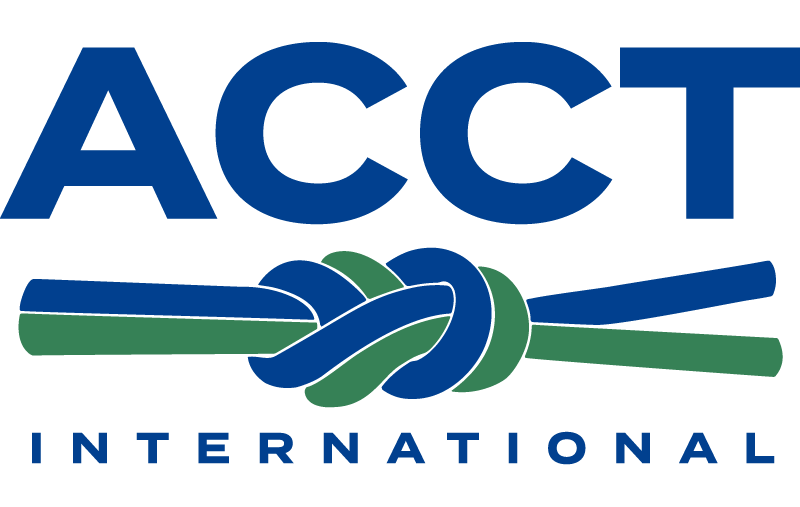Resident Camp Challenge Course Use in Time of COVID-19
Introduction
Opening a resident camp under of COVID19 protocols requires careful planning and program design. The plan your camp created to practice social distancing as required in your area is key to using your challenge course this summer. Practices used in other parts of camp can be adapted to the challenge course area.
- Keep Social Distancing structures that exist in other parts of camp the same at the challenge course. If camp has established an intact group size for camp operations, then these groups should be maintained at the challenge course. This could mean some activities can not be used. For example, if the intact group size is 10 and the activity like a Giant’s Ladder requires 15 to operate, this activity will have to be left unused. If historically 100 campers have used the climbing wall in a day in an open climb format, that will have to be changed to a smaller number of intact groups with time for cleaning the equipment and the activity between sessions.
- Frequent Hand washing. The CDC, NIH and WHO all state that hand washing is a primary and important tool in limiting the spread of the virus. This is true at the challenge course as well. Additionally, the Climbing Wall Association’s COVID-19 resources page specifically calls out frequent hand washing as key to keeping facilities as clean as possible. (https://climbingwallindustry.org/page/Coronavirus ) Camps are encouraged to have hand washing and hand sanitizing available immediately before and after participants use an activity.
- Clean equipment at reasonable intervals. Cleaning harness, helmets and other equipment must be done to the specific requirements of each equipment manufacturer. While there are differences across brands and types of equipment, one thing is consistent: Detergent must not be used on textile products. It is imperative to assure what ever cleaner is used is not a detergent. Additionally, bleach or bleach-based product cannot be used on climbing equipment. Establish a consistent cleaning cycle for equipment. As of mid-May, research appears to show that 72 hours out of use or human contact is sufficient to consider equipment virus free. This is not definitive, and camps are strongly encouraged to check NIH and CDC for changes in this information and adjust practices accordingly. At this time, if gear can be unused for 72 hours, it can be considered cleaned. Camps are encouraged to consider increasing equipment inventories to allow each group on the course to have one set of participant equipment per person in the regular in camp group size. For example, if the camp cabin size is 10 and those 10 kids are doing all their activities together, then having a harness and helmet for each camper is encouraged. This allows cleaning between groups which should simplify logistics and provide a greater sense of security. For additional information on cleaning equipment, consult ACCT’s Coronavirus Resource page (https://www.acctinfo.org/general/custom.asp?page=coronavirus).
- Clean the activity at reasonable intervals. Participant hand washing immediately before and after using the activity will help keep the activity as clean as possible. Frequently touched surfaces can be sanitized between groups. Ladders, staple climbs, and other areas touched by each person in a group can be cleaned between groups. Additionally, a review of the schedule of activities may provide enough time between groups for considerable virus degradation from sun and environmental conditions.
Note on Staff Gear
ACCT strongly recommends that challenge course staff who work the course regularly have an assigned set of gear they each use which is not shared. The harness, helmet, and lanyards a staff member uses are only used by one person for the session or season. This simplifies cleaning of gear and creates another person in the challenge course area who is not sharing equipment potentially spreading the virus.
Document What You Do
It is important to document what you do. We are all new to this Pandemic thing and need ways to evaluate what happens with DATA. That data starts with detailed documentation of policies and procedures. Create clear, simple and durable procedure cards and check lists for all challenge course areas which remind staff and participants of the practices put in place by the camp. Supervision to assure procedures are being followed is a key next step. Considering how quickly the scientific world is learning about and publishing updated information on the SAR-CoV-2 virus and its behavior, it is inevitable that at least one part of your plan from the start of the summer will need to be updated mid-season. Make a plan now for how those changes in protocols will be shared with staff, how staff will be trained and how the changes will be documented. In 2021, you will want to have clear records of what you did in 2020 to assure you can make accurate adjustments to your practices. Additionally, we strongly encourage you to keep your Vendor up to date with your plans and procedures. They will likely be able to help you craft a better solution.
